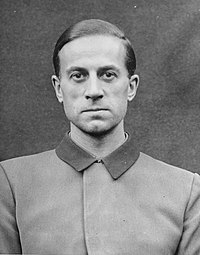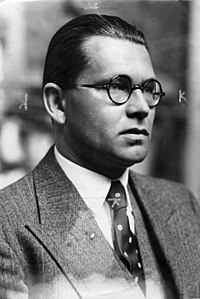Am Spiegelgrund clinic
Am Spiegelgrund was the name of a children's clinic in Vienna where hundreds of children were killed under the Nazi Regime Children's Euthanasia Program.[1]


Context
Hitler's "Final Solution" was the order for the genocide of Jews in Europe. There were also many euthanasia centres in Germany and Austria for people suffering from mental diseases or handicaps : Hadamar Euthanasia Centre, and Hartheim Euthanasia Centre, for example. But not just adults were killed. Children were "mercifully" sent to Children's Hospitals. The most prominent of these was the Kinderspital (Children's Clinic) am Spiegelgrund in Vienna.
Euthanasia of children
During World War II, Spiegelgrund was a children's clinic led by Ernst Illing and for two years by Heinrich Gross.[2] Many patients who had been deemed seriously handicapped died in mysterious circumstances. Upon inquiry, they would blame pneumonia or a fatal muscle conniption caused by the mental state of the patient. In reality, the children were being killed by lethal injection and gas poisoning.[1]
After death, the bodies were subjected to medical experiments. Brains and other body parts were removed, placed in formaldehyde jars and stored secretly in the basement for 'research'. After the war, the remains of over 800 children were discovered in the hospital and were buried in a secret memorial service. They were officially put to rest in 2002 and Gross had his Honorary Cross for Science and Art (awarded in 1975) stripped in 2003.[3]
Detailed coverage of the burial ceremony, as well as full background are told in the 2004 film Gray Matter.
External links
- Gray Matter at IMDb
See also
References
- ^ a b Samuel Totten,William S. Parsons. Century of genocide: critical essays and eyewitness accounts. Retrieved July 10, 2011.
- ^ Linda Gask. A short introduction to psychiatry. pp. 18, ss. Retrieved July 10, 2011.
- ^ "Gross symbolises Austria's past". BBC. 21 March 2000. pp. 181, ss. Retrieved July 10, 2011.
